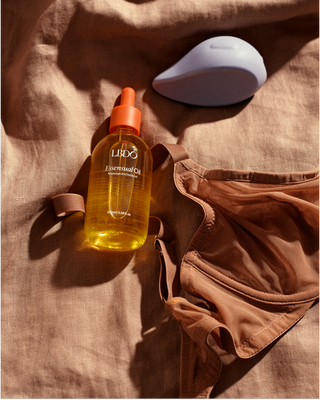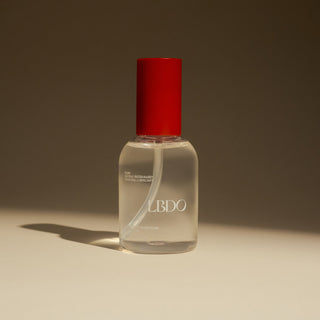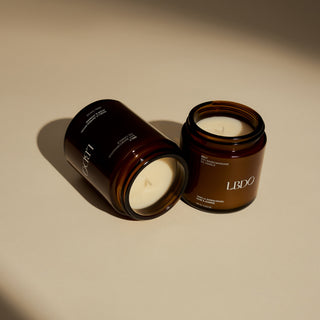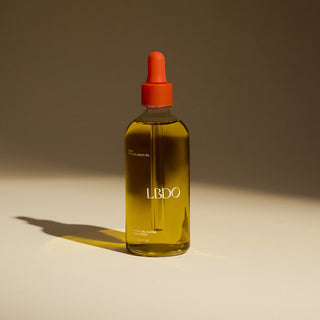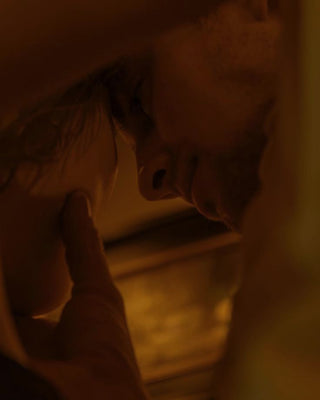Introducing In Touch - real stories, honest conversations and shared experiences from our community. Pleasure, connection, and sexuality are deeply personal. No two experiences are the same and there are endless stories of discovery, desire and self-acceptance waiting to be told. This series is about sharing them.
A life lived with chronic illness and pain can often be a life lived in the shadows. But Naomi, a 24-year-old content creator and disability advocate from Naarm/Melbourne, is reimagining this. While the journey that led to her endometriosis diagnosis, laden with delays, disbelief and dismissal, will be familiar to many, it’s where she has taken it that is as empowering as it is unexpected. Naomi’s story is one altered by pain and reclaimed through community, connection and rethought intimacy and pleasure.
“My endometriosis symptoms started when I got my first period at age 14. As time passed, the severity progressed and I became debilitated by my condition. I’ve had consistent issues with menstrual cramps, painful and irregular bowel and urinary function, painful sex and fatigue. I was told time and time again that this is just what a period is like, and that going on the pill would fix it.”
In 2022, Naomi underwent a laparoscopy that confirmed her diagnosis: stage 1 endometriosis. It had been seven years since the onset of her symptoms – a shocking, but all-too-common experience for those with endo. Her symptoms continued to worsen and in 2024 she sought specialist treatment in Sydney, leading to the devastating news that her endo had progressed to stage 4.
As anyone does nowadays, Naomi took to the internet to learn more, where she discovered a network of others also living with chronic illness, and began sharing her own experiences.
“I had no idea how many other people were living the exact same lives as mine. They had the same stories, the same journey, and had all been disregarded and overlooked. I learnt as much as I could from these online communities and began advocating for the issues faced by endometriosis sufferers and the invisibly disabled community. It was through this advocacy that I found purpose from my pain.”
Accustomed to being disbelieved and having the impact of her illness downplayed, Naomi describes unexpectedly feeling more comfortable sharing her struggles to an online audience, whose assumptions feel more distant.
“That way at least if the strangers online are going to judge me… they’re stuck behind a screen, and it’s very unlikely they’ll ever meet me in person.
This is why I have these conversations and advocate for hidden disabilities, so that we can try to improve these assumptions. Connecting with communities of people with similar experiences has been life saving. There is so much power in community, especially within spaces we often otherwise feel powerless.”
Through her online advocacy, Naomi promotes awareness on large issues that don’t get much attention, like medical gaslighting and the women’s pain gap. But as a recently single woman, she’s also unafraid to get personal and talk about the impact endo has on her sexuality, her relationship with her body, and dating.
“Having sex and pleasure so closely linked to pain and grief has really taken a toll on my confidence in my sexuality, my body, and my self esteem. My body looks different now. I have scars and burn marks from heat packs, called ‘toasted skin syndrome’. I’m not able to participate in intimacy and intercourse how I used to due to the pain, [which is] especially difficult as a single person. Having to explain all of this to a new person and navigate the restrictions my body presents can feel really overwhelming and sometimes scary.”
In negotiating these new, uncharted waters, Naomi is steering clear of the pressures of hustle culture and intentionally making time to rest and unwind – think candles, skincare and Love Island UK – and is reconnecting with intimacy and pleasure in ways that work with her body, not against it.
“This could look like… receiving pleasure in the bath or shower, and using the warmth of the water to help soothe discomfort. It could be long, sensual massages. Or you could use toys and other items that encourage alternative forms of intimacy.
Using a vibrator (the LBDO Essensual Vibe is my all time fave), whether that’s with myself or a partner, has been extremely helpful. It allows me to experience pleasure and reach amazing climaxes with less effort, in less time and with or without penetration, which pain and fatigue can make really difficult.”
And, as with most things in life, Naomi stresses the importance of communication. Texting friends for advice, online interactions and open and honest conversations before engaging in intimacy with a partner have been crucial to her self-empowerment, and unapologetic self-love.
“Don’t let anyone make you feel like the barriers that come from your pain should stop you from feeling loved or desired. Intimacy and sex don’t have to look one way, and you deserve to feel satisfied! Anyone that doesn’t want to put the time and effort into helping you get there doesn’t deserve to be there with you in the first place.”
We thank Naomi so much for sharing her story with us.


